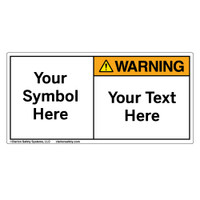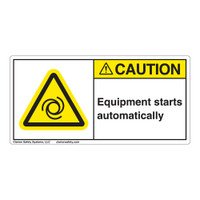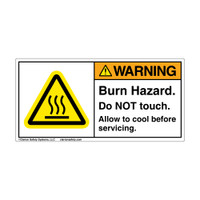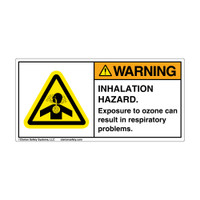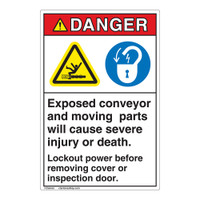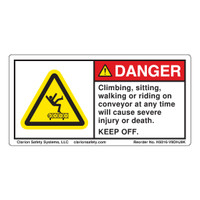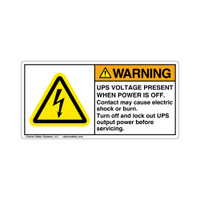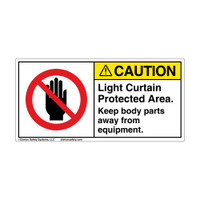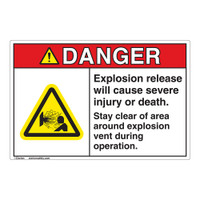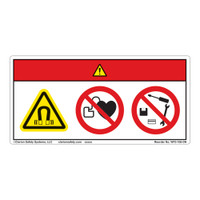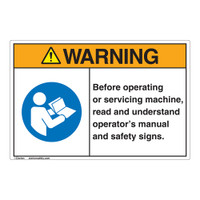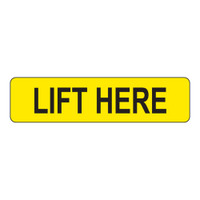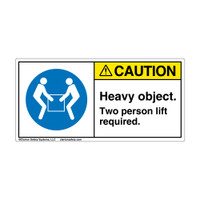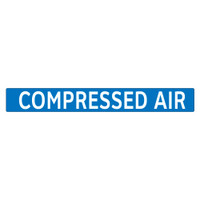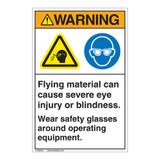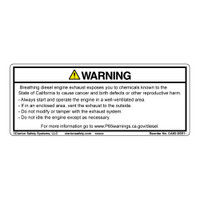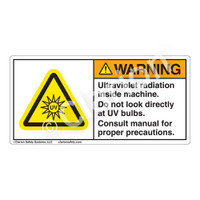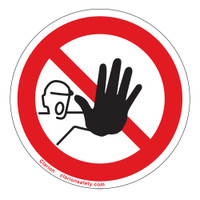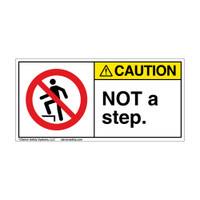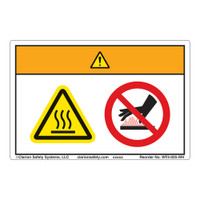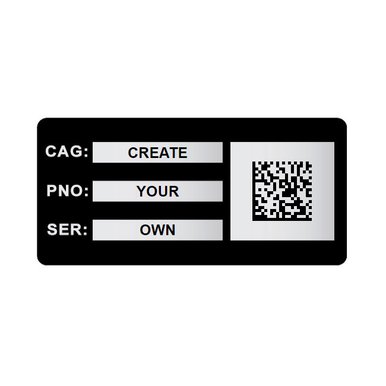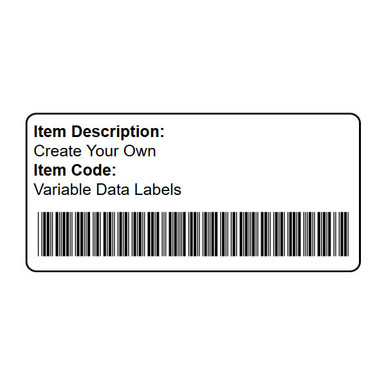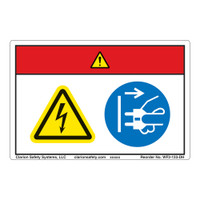-
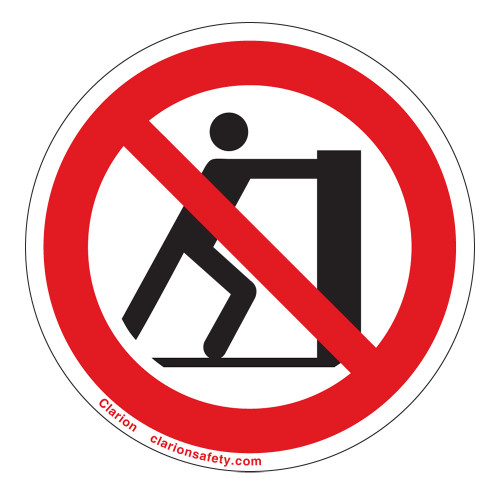
Do Not Push Label (IS6066-)
Starting at $0.41 / each -
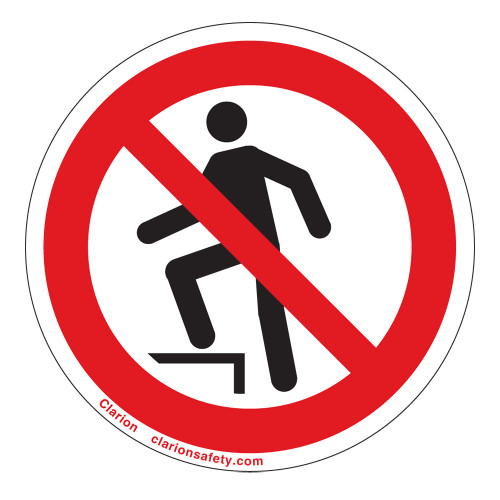
Do Not Step Label (IS5080-)
Starting at $0.41 / each -
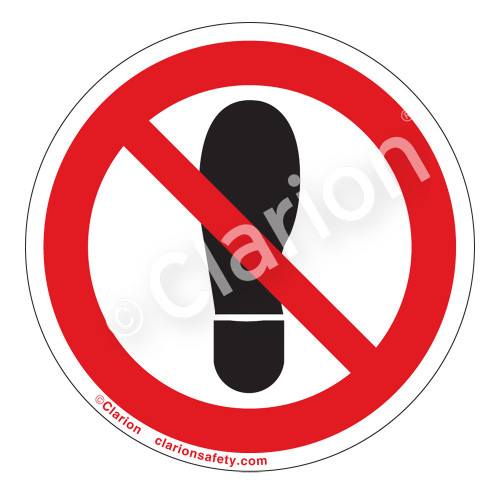
Do Not Step Label (IS6162-)
Starting at $0.41 / each -

Danger Climbing Sitting Label (H5016-V9DH)
Starting at $0.86 / each -
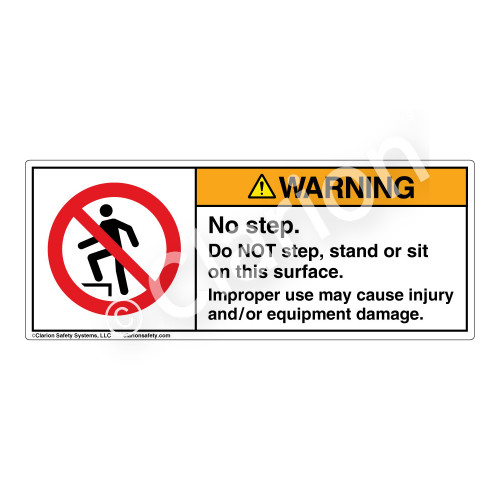
Warning No Step Label (H5080-C07WH)
Starting at $0.98 / each -
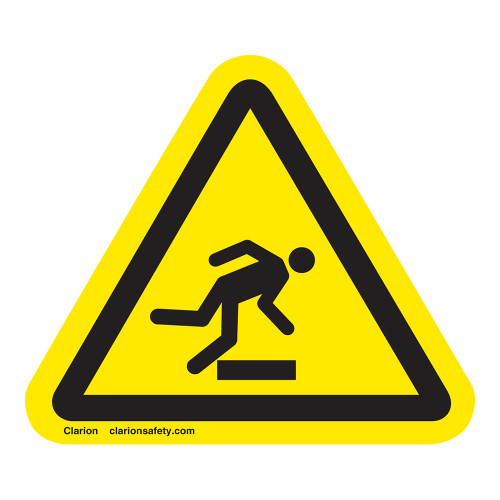
Trip Hazard Label (IS5144-)
Starting at $0.41 / each -
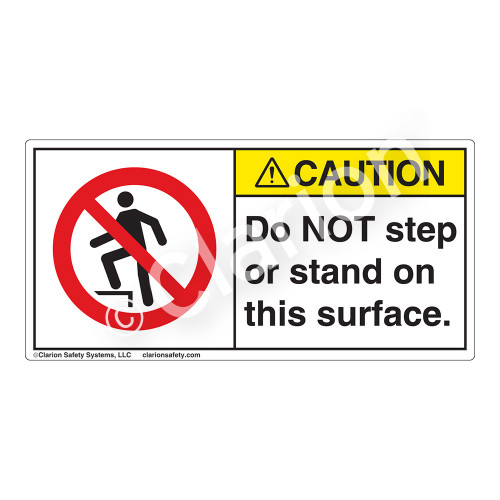
Caution Do Not Step Label (H5080-CYCH)
Starting at $0.86 / each -
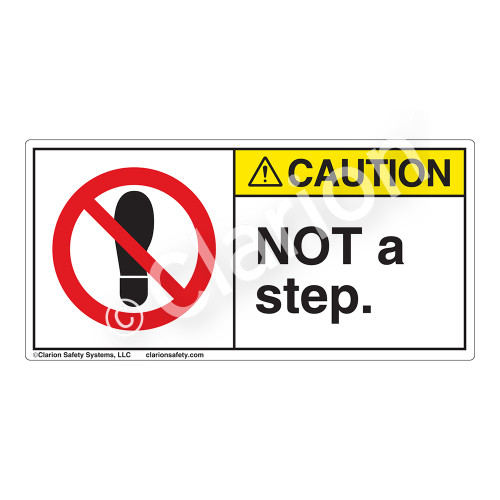
Caution Not A Step Label (H6162-470CH)
Starting at $0.86 / each -

Fall Hazard From Conveyor Label (IS5016-)
Starting at $0.41 / each -
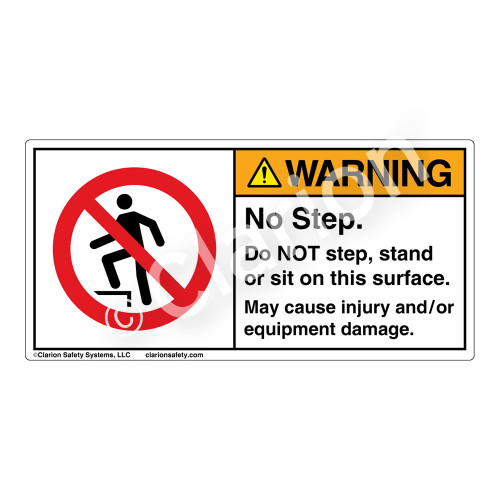
Warning No Step Label (H5080-DY5WH)
Starting at $0.86 / each -
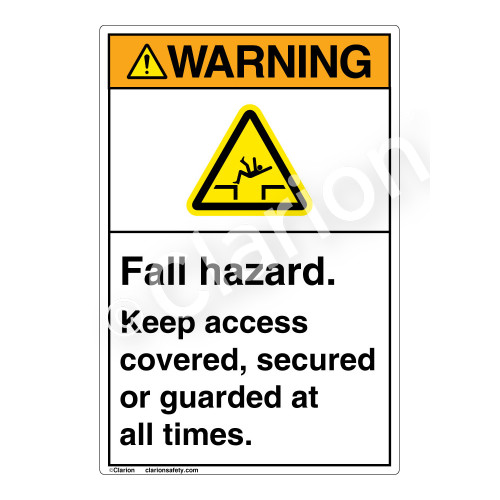
Warning Fall Hazard Label (EMC 35)
Starting at $2.95 / each -
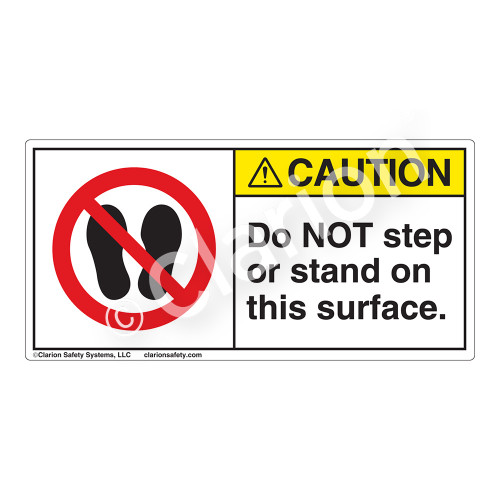
Caution Do Not Step or Stand Label (H6163-CYCH)
Starting at $0.86 / each -
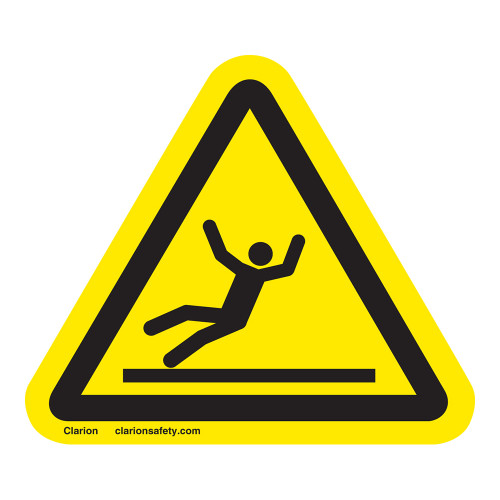
Slip Hazard Label (IS5145-)
Starting at $0.68 / each -
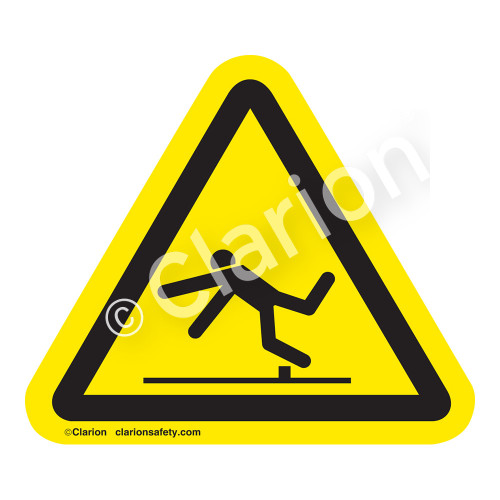
Trip Hazard Label (IS5019-)
Starting at $0.41 / each -

Warning/Do Not Step Label (WF3-103-WH)
Starting at $0.86 / each -

Caution/Do Not Step Label (WF2-142-CH)
Starting at $0.83 / each -
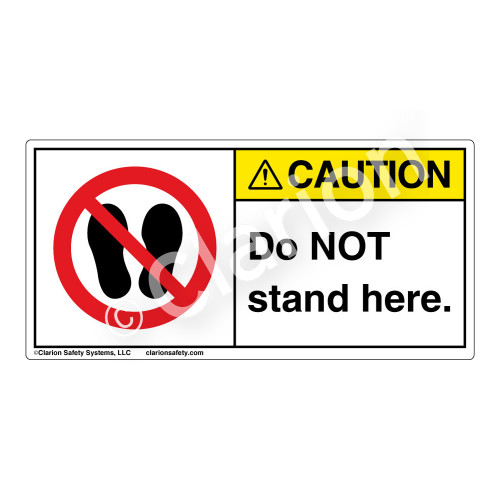
Caution Do Not Stand Label (H6163-D55CH)
Starting at $0.86 / each -
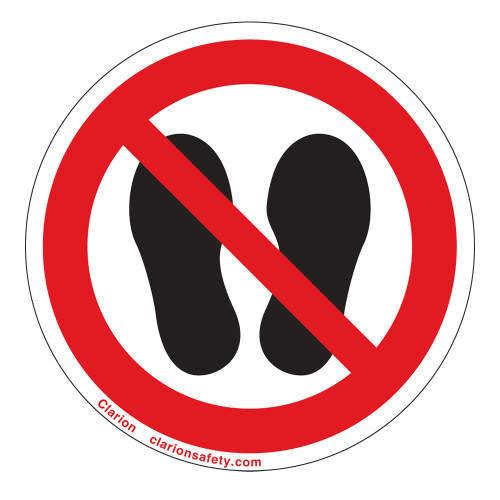
Do Not Stand Here Label (IS6163-)
Starting at $0.41 / each -

Warning No Step Label (H6162-DY5WH)
Starting at $0.86 / each -
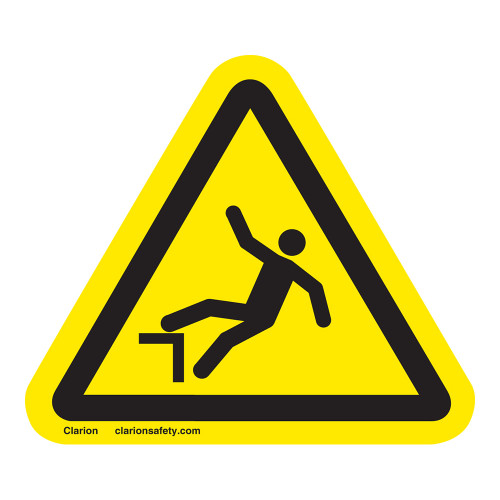
Drop Fall Hazard Label (IS5079-)
Starting at $0.41 / each -
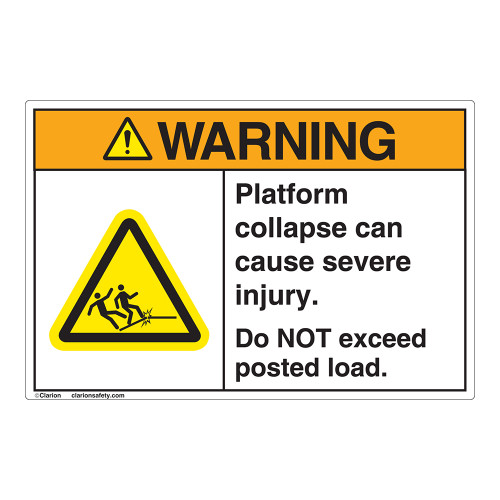
Warning Platform Collapse Label (EMC 31)
Starting at $1.82 / each -
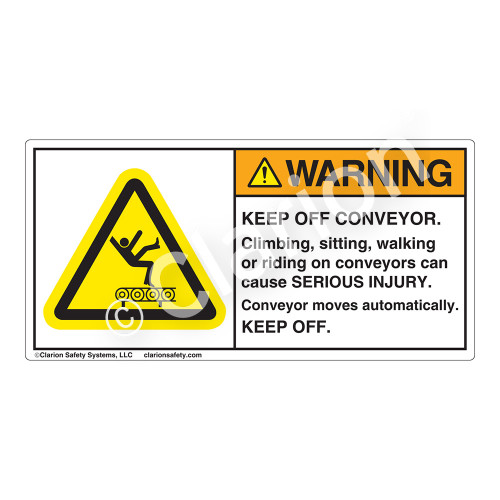
Warning Keep Off Conveyor Label (H5016-H77WH)
Starting at $0.86 / each -
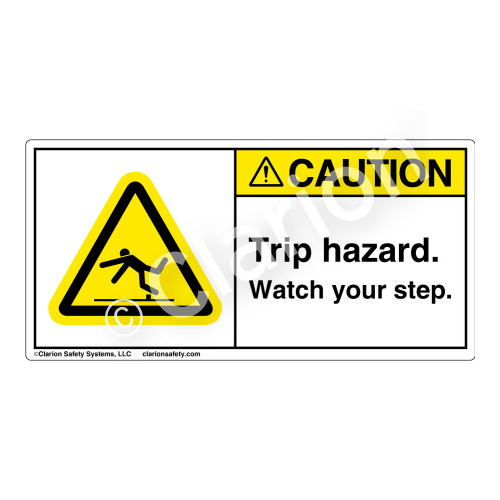
Caution Trip Hazard Label (H5019-88CH)
Starting at $0.86 / each -

Slip Hazard (IS5021-)
Starting at $0.41 / each -
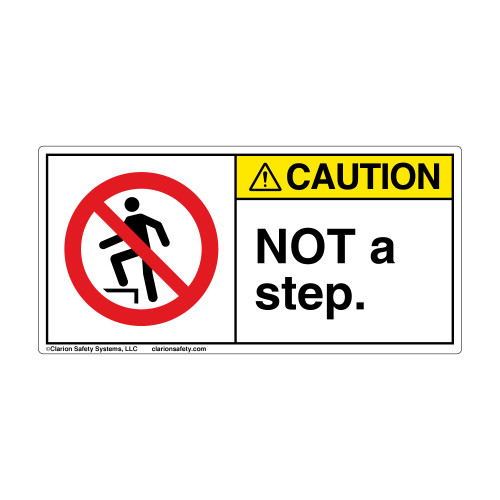
Caution/Not A Step (H5080-470CH)
Starting at $0.86 / each -
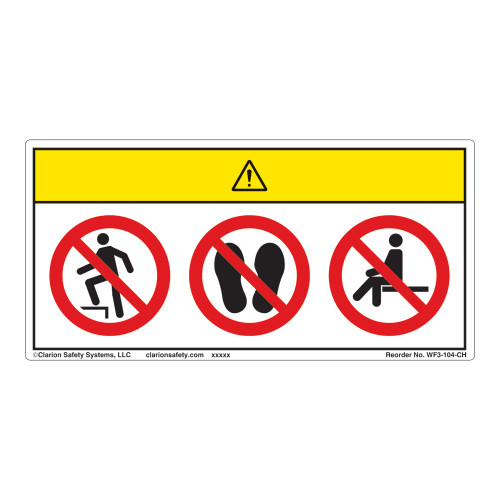
Caution/Do Not Step Label (WF3-104-CH)
Starting at $0.86 / each -
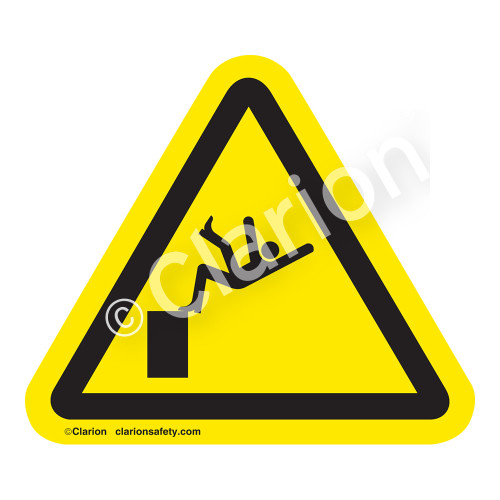
Fall Hazard Label (IS5018-)
Starting at $0.41 / each -

No Step Label (IS6179-)
Starting at $0.61 / each -

Wear Safety Harness Label (IS6144-)
Starting at $0.41 / each -
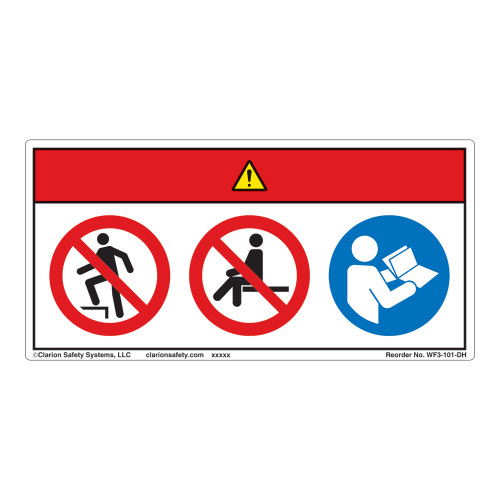
Danger/Do Not Step Label (WF3-101-DH)
Starting at $0.86 / each -
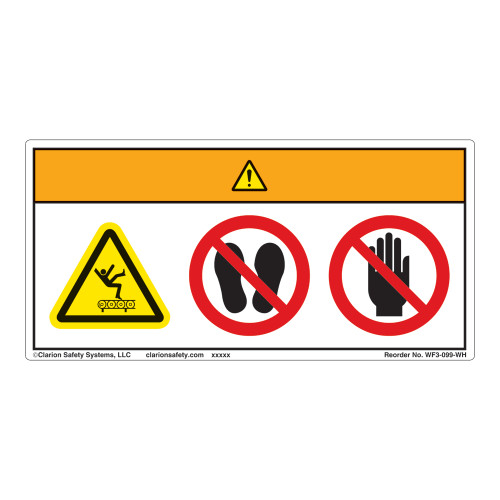
Warning/Keep Off Conveyor Label (WF3-099-WH)
Starting at $0.86 / each -
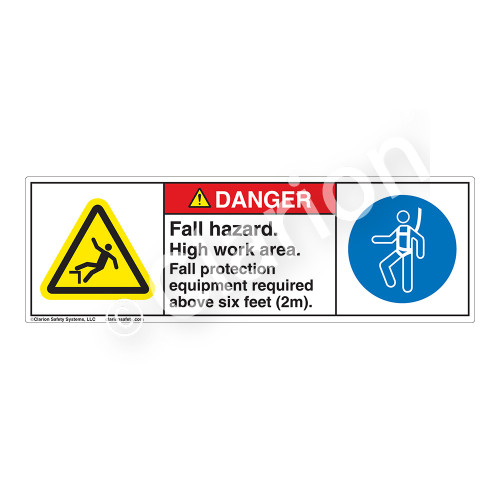
Danger Fall Hazard Label (H5079/6144-179DH)
Starting at $1.16 / each -
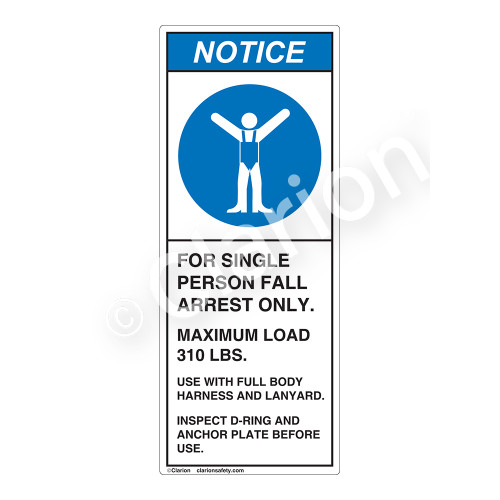
Notice For Single Person Fall Label (H6112-G64NV)
Starting at $0.98 / each -
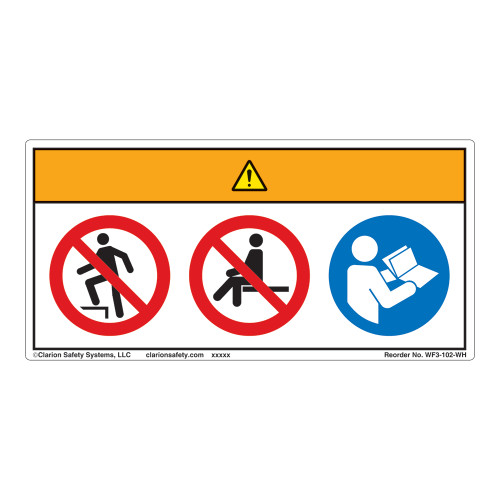
Warning/Do Not Step Label (WF3-102-WH)
Starting at $0.86 / each -
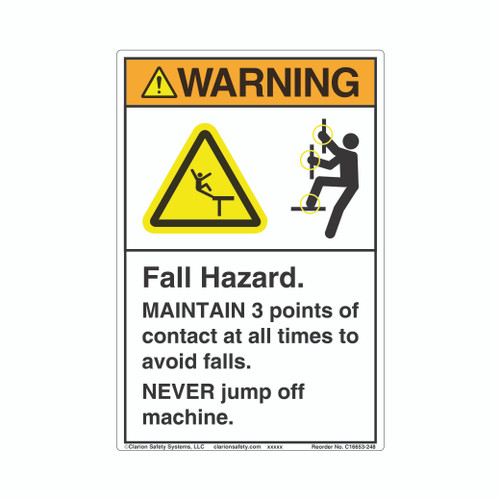
Warning/Fall Hazard – 3 Points of Contact (C16653-248)
Starting at $11.74 / each -
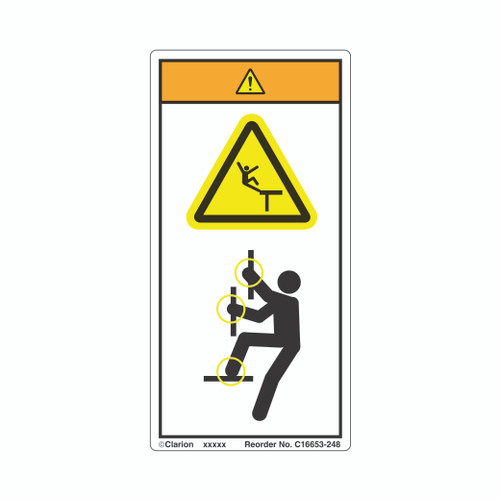
Warning/Fall Hazard – 3 Points of Contact (C16653-249)
Starting at $5.90 / each
Preventing Slip, Trip, and Fall Hazards with Effective Labeling
Industrial environments often contain slip, trip, and fall hazards that can lead to unintended injuries for workers and visitors. These risks are frequently associated with machinery featuring moving parts like rollers, gears, belt drives, and conveyors. The consequences of these hazards can be severe, including hand injuries, mangled fingers, scalp injuries, and even amputations.
Clarion Safety’s slip, trip, and fall hazard labels help manufacturers alert individuals to these dangers at the point of risk. These labels function similarly to other machinery safety labels, promoting awareness and actively contributing to injury prevention.
What Are Slip, Trip, and Fall Hazards?
- Slip: A slip occurs when there is too little friction between a person's foot and the walking surface. This can cause a loss of balance, often resulting in a fall. Slips commonly happen due to wet, oily, or otherwise slick surfaces.
- Trip: A trip happens when a person's foot strikes an object or uneven surface, causing a loss of balance. Trips typically occur due to obstacles, clutter, or inconsistent flooring heights.
- Fall: A fall is the result of a person losing their balance and being unable to recover. Falls may follow slips or trips, but can also occur independently -- for example, from elevated surfaces without adequate guarding.
Common Sources of Slip, Trip, and Fall Injuries
Hazards in the workplace can include surfaces that should not be stepped on, slippery areas that lead to liquid spills, and elevated equipment like conveyors that pose risks when climbed or walked on. Additionally, the presence of equipment may compound the danger of a slip, trip, or fall in a working environment. The importance of alerting people to these hazard sources, and the consequences of inattentiveness is especially heightened in such situations.
Slips, trips, and falls occur due to the interplay of friction, momentum, and gravity. Slips result from a lack of traction between footwear and the walking surface, often caused by moving too quickly, not paying attention, or using inappropriate personal protective equipment. Trips happen when an obstacle or uneven surface disrupts motion. Falls typically occur when balance is lost and recovery is impossible due to height or surface conditions.
Injury Impact and Design-Based Mitigation
While seemingly avoidable, fall hazards still account for more workplace fatalities than any other reason. Slips, trips, and falls can result in sprains, strains, fractures, head trauma, spinal injuries, and more. Landing awkwardly or striking the head on a hard surface can lead to severe consequences, necessitating medical attention and potential long-term effects.
Risk mitigation includes thoughtful equipment design such as installing drip pans, raised or lipped edges, integrated exhaust ventilation, and - critically - the use of high-visibility labels to guide safe behavior, alert the user to hazard sources, and clearly mark restricted or hazardous areas.
If you need support identifying the right labeling solution for your environment, our safety experts are here to help. Contact Our Team to get started.
